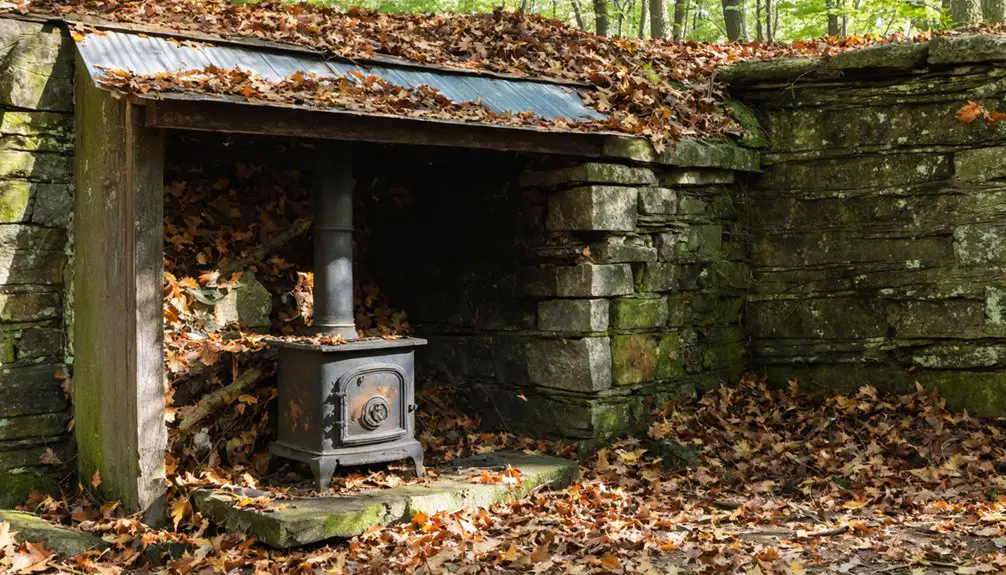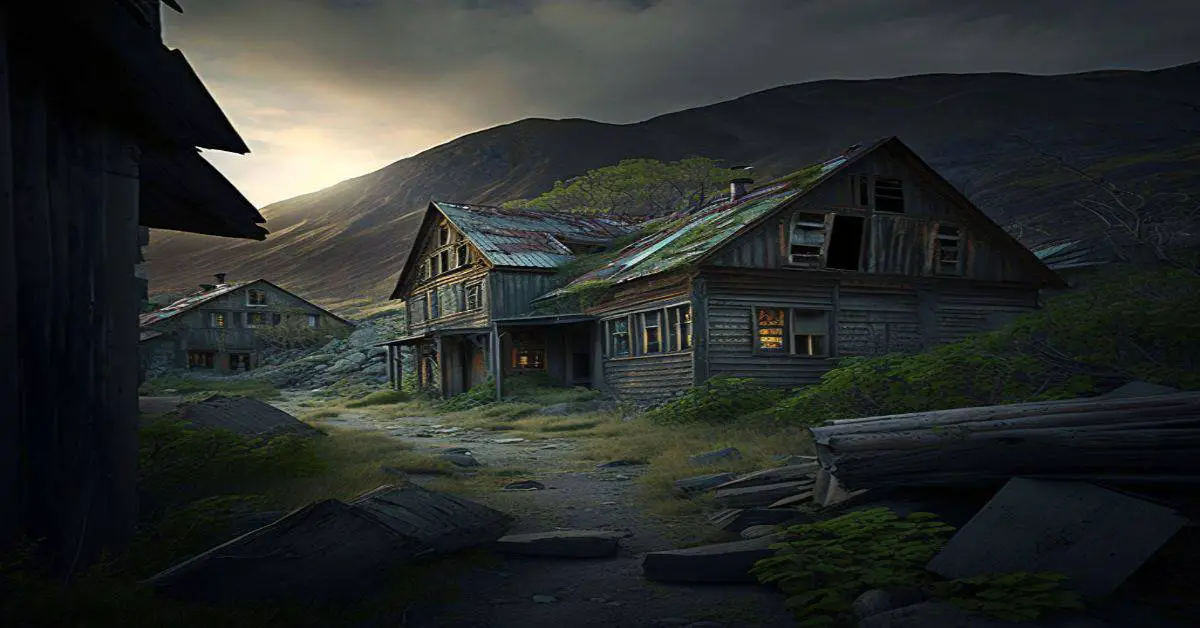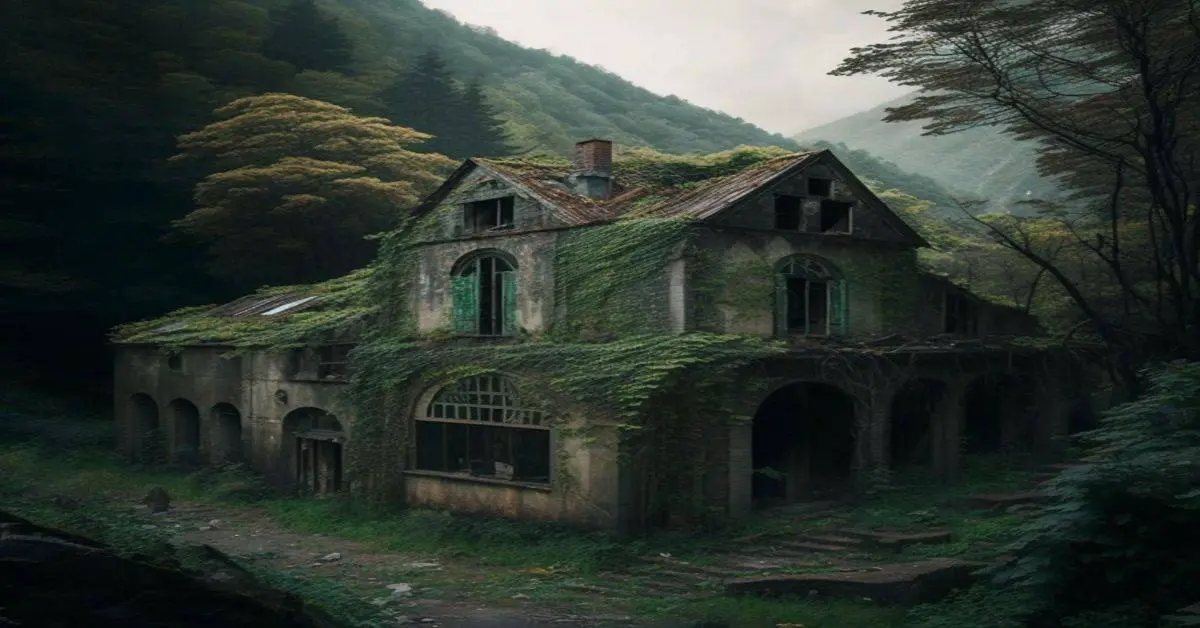You’ll find Lupton’s fascinating transformation from an 1880s Quaker settlement to a ghost town nestled in Michigan’s wilderness. Once a thriving timber community, it evolved into a notorious Purple Gang hideout during Prohibition, complete with secret tunnels and the infamous Graceland Ballroom. The Great Depression dealt the final blow, driving away residents and businesses. Today, hidden architectural traces and underground passages whisper stories of its dramatic past, from religious roots to criminal enterprises.
Key Takeaways
- Lupton transformed from a thriving timber town to a ghost town following economic devastation during the Great Depression.
- The town experienced 34% unemployment and mass exodus of residents, leading to abandoned buildings and closed businesses.
- Historical landmarks like the Graceland Ballroom, which burned down in 1980, represent the town’s decline from prosperity.
- Underground tunnels and hidden rooms from Purple Gang operations remain as physical remnants of Lupton’s notorious criminal past.
- Preservation efforts continue to protect Lupton’s historical sites, while local townships manage remaining landmarks and cemeteries.
The Birth of a Quaker Settlement
In 1880, as Quaker families pushed westward from Ohio seeking new land and religious freedom, they established a settlement that would become Lupton, Michigan. Led by Emmor Lupton’s family, these English, Irish, and Welsh Quakers initially called their new home “Lane Heights,” securing a post office named “Lane” in 1881.
You’ll find that this Quaker migration wasn’t random – they carefully selected land near lakes that could support long-term development. Following their Society of Friends principles, they created a structured community governance system centered on regular meetings and detailed record-keeping. Like most articles about historical communities, their story represents content that evolves as new information is discovered.
They’d build their homes and streets methodically, establishing a peaceful haven in the Michigan wilderness. As farmers and tradespeople, they’d lay the foundation for what would later transform from a simple religious settlement into a bustling timber town. The settlement would eventually be renamed to Lupton in 1893 when the post office was officially established.
From Timber Town to Tourist Haven
The bustling sawmills and lumber camps that transformed Lupton’s quiet Quaker settlement would eventually give way to a different kind of enterprise.
When the timber industry declined, you’d have found the community reinventing itself through tourism. To protect against vandalism, the town implemented user verification systems at key historical sites. The iconic Graceland Ballroom, built in the 1920s for $40,000, became a symbol of this shift, drawing visitors for entertainment and social gatherings.
The Graceland Ballroom marked Lupton’s evolution from timber town to tourist destination, offering entertainment where sawmills once dominated.
You can trace this evolution in the area’s architecture, as log construction shifted from practical necessity to tourist appeal. The Detroit & Mackinac Railway provided vital transportation access to the area.
The surrounding lakes and forests that once fed the timber industry became attractions for fishing, hunting, and outdoor recreation.
While Lupton never regained its peak prosperity from the logging era, its transformation shows how communities can adapt – trading sawdust for vacation destinations and industrial bustle for recreational charm.
The Purple Gang’s Secret Paradise
While Lupton’s timber industry faded into history, a more sinister enterprise took root in this quiet town during the 1920s.
During this era, the gang’s ruthless criminal methods made them one of the most feared organizations in the Midwest.
You’ll find the remnants of what locals called the Purple Paradise – where Detroit’s notorious Purple Gang established their northern stronghold. At the heart of their operation stood the Graceland Ballroom, built by “One Arm” Mike Gelfand, where bullet holes decorated the rustic log walls and Al Capone himself conducted mob business. The once-bustling establishment met its end when it burned down in 1980.
The Gang Legacy lived on at the grand Durant estate, where the Detroit Partnership maintained a luxurious compound complete with hidden rooms, secret tunnels, and a private airstrip.
You can still hear whispers about the property’s dark secrets, including rumors that Jimmy Hoffa’s final resting place lies somewhere on these shadowy grounds.
Underground Tunnels and Hidden History
Beneath Lupton’s unassuming surface lies an intricate web of underground passages that once served the Purple Gang‘s criminal enterprise.
Through tunnel exploration, you’ll discover a hidden world where notorious figures like Al Capone and Jimmy Hoffa once walked. The South Branch Ranch and Kenyon’s Resort showcase some of the most extensive networks, revealing hidden histories of Michigan’s underground criminal past.
Recent investigations have uncovered a complex series of multiple buried workspaces connected by doorways.
These secret passages served multiple purposes:
- Bootlegging operations during Prohibition
- Hidden rooms for clandestine meetings
- Underground horse riding areas and dance parlors
- Escape routes connecting multiple properties
Kenyon’s Lakeside Resort has maintained operations for over 130 years, preserving much of its mysterious underground infrastructure.
You can still find traces of this criminal underworld in Lupton’s architecture, from bullet-marked walls at the Graceland Ballroom to mysterious rooms beneath the Commercial Exchange Building.
While many tunnels remain unexplored, they stand as evidence of an era of outlaws and underground operations.
The Great Depression’s Fatal Blow
During America’s darkest economic hours, Lupton faced devastation as the Great Depression‘s crushing waves swept through Michigan’s small towns in the early 1930s.
With unemployment soaring to 34%, you’d have witnessed the heartbreaking exodus of your neighbors seeking work elsewhere, leaving behind empty storefronts and crumbling dreams.
The economic despair cut deep into Lupton’s soul as farms failed and factories closed.
You would’ve seen community disintegration firsthand – schools shuttering, roads deteriorating, and essential services vanishing.
Young families fled, leaving an aging population to watch their town slip away.
Local institutions, from post offices to health services, couldn’t survive the financial strain.
Like many Midwestern towns, Lupton’s farmers saw their farm income plummet 60% as agricultural prices hit rock bottom.
As the nation’s GDP shrank by 9.0% in 1930, local businesses struggled to stay afloat.
The psychological toll was immense, as isolation and hopelessness replaced the once-vibrant community spirit, ultimately pushing Lupton toward its ghost town fate.
Lakes, Land, and Lost Architecture
You’ll find Lupton nestled along the scenic Rifle River, where historic water-powered mining operations once thrived among the region’s natural lakes and wetlands.
The ghost town’s remaining churches and company buildings stand as silent witnesses to the past, with their weathered foundations and scattered bricks slowly returning to the rugged Upper Peninsula landscape.
While exploring the area’s waterlogged terrain, you can spot traces of early 20th-century architecture amid the dense forest, including remnants of wooden frame homes and iron machinery from the town’s industrial heyday.
Scenic Lakes Surround Lupton
The scenic lakes surrounding Lupton, Michigan offer a natural paradise within the Rifle River Recreation Area, where Grousehaven Lake and Devoe Lake stand out as peaceful no-wake waters.
You’ll find excellent spots for lake activities like fishing, paddling, and swimming, while the wooded shorelines provide prime wildlife viewing opportunities.
The expansive Warblers Cove complex encompasses four pristine lakes across 610 acres, where you can:
- Cast a line for trout in protected fishing spots
- Launch your kayak from well-maintained access points
- Explore miles of forested hiking trails along the shoreline
- Set up camp at one of three nearby campgrounds offering modern amenities
These tranquil waters, nestled within the natural landscape, continue to preserve the region’s wild character while providing year-round recreational access.
Historic Buildings Still Standing
Standing as silent witnesses to Lupton’s bustling past, several weathered clapboard structures still dot the landscape where a thriving 19th-century logging community once stood.
You’ll find simple rectangular buildings with pitched roofs and uniformly spaced windows, reflecting the practical needs of Michigan’s 19th-century frontier life. Without formal historic preservation efforts, these wooden remnants face constant challenges from harsh winters and encroaching vegetation.
As you explore the site, you’ll discover foundations of what was likely a sawmill, traces of a general store, and possibly a schoolhouse.
The architectural features, though deteriorating, tell stories of daily life through modest trim work and porch remnants. Original foundations and cellar holes mark where additional buildings once completed this hardworking community’s streetscape.
Preserving Michigan’s Ghost Town Legacy
While Michigan’s numerous ghost towns slowly fade into history, dedicated preservation efforts across the state work tirelessly to protect these invaluable windows into the past.
Ghost towns may crumble, but Michigan’s preservation warriors fight to keep these precious time capsules alive for future generations.
You’ll find community involvement at the heart of these efforts, though preservation challenges like vandalism and weathering constantly threaten these historic sites.
Michigan’s commitment to protecting ghost town heritage includes:
- Local township management of historic cemeteries and landmarks
- State-level recognition through the Governor’s Awards for Historic Preservation
- Educational initiatives highlighting 19th-century economic developments
- Partnerships between historical societies and preservation offices
You’re witnessing a delicate balance between accessibility and protection, where your responsible visitation helps maintain these vital links to Michigan’s industrial past.
These preservation efforts guarantee future generations can experience and learn from these remarkable historic settlements.
Frequently Asked Questions
Are There Any Remaining Descendants of the Original Lupton Family Today?
You’ll find it challenging to trace the Lupton family legacy today, as descendant stories aren’t clearly documented. While the family shaped early settlement, their current whereabouts remain largely unknown.
What Happened to the Purple Gang Members Who Frequented Kenyon’s Resort?
Thousands of Purple Gang members who haunted Kenyon’s Resort faced brutal ends – you’d find most were killed in gang violence, imprisoned for bootlegging, or quietly disappeared into history’s shadows after Prohibition ended.
Can Visitors Legally Explore the Underground Tunnels Beneath the Resort?
You can’t freely explore the underground tunnels, as they’re restricted private property. Your only legal access is through guided ghost tours or special events authorized by Kenyon’s Resort management.
Were There Any Documented Murders or Major Crimes at Kenyon’s Resort?
While the resort’s crime history involves bootlegging and Purple Gang activities, you won’t find documented murders in official records, though rumors and murder mysteries continue to intrigue visitors exploring its notorious past.
How Many Original Buildings From 1880S Lupton Are Still Standing?
Like trying to find a smartphone in the 1880s, you can’t definitively know how many original Lupton buildings remain standing today. Historical records don’t document building preservation from that period.
References
- https://www.geocaching.com/geocache/GC7XAFZ
- https://lostinmichigan.net/kenyons-resort-a-lakeside-hideaway-with-a-purple-past/
- https://kids.kiddle.co/List_of_ghost_towns_in_Michigan
- https://www.youtube.com/watch?v=wGcplKUoBqc
- https://en.wikipedia.org/wiki/List_of_ghost_towns_in_Michigan
- https://en.wikipedia-on-ipfs.org/wiki/Lupton
- http://files.lib.byu.edu/family-history-library/research-outlines/NonGeographic/Quaker.pdf
- https://www.thefreelibrary.com/A+foothold+for+faith.-a0394997476
- https://www.ksgenweb.org/archives/1918ks/biol/luptoneh.html
- https://genealogytrails.com/mich/ogemaw/history.html


